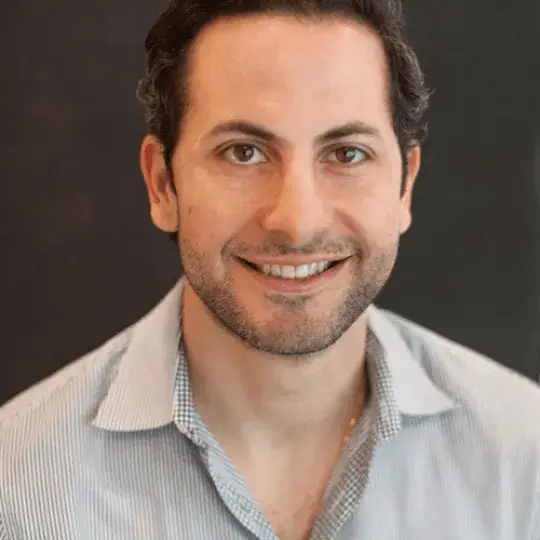Post Traumatic Stress Disorder (PTSD) is a mental health condition triggered by a terrifying event – whether the individual experienced or witnessed it. An up-and-coming treatment in Los Angeles for those with PTSD is Eye Movement Desensitization and Reprocessing (EMDR) treatment. Promising results have come from EMDR treatment for those with PTSD and how they process their trauma. If you have PTSD, understanding how EMDR works, what it entails, and how it helps with mental health conditions can help you determine if this treatment is right for you.
In this article, we will discuss what EMDR therapy is, the eight phases of EMDR therapy, and what to expect from EMDR therapy in Los Angeles.

What is EMDR Therapy?
Before you start looking for a provider in Los Angeles that offers EMDR treatment – it is essential to understand what it is, how it works, and why it is a beneficial course of treatment. EMDR therapy is a structured therapy that encourages the patient to briefly focus on the trauma memory while simultaneously experiencing bilateral stimulation. This bilateral stimulation is traditionally in the form of guided eye movements. The process works to reprocess traumatic memories, reducing their lingering effects and allowing individuals to develop more adaptive coping mechanisms.
Francine Shapiro developed EMDR in the late 1980s and rests on the Adaptive Information Processing model. This model hypothesizes that EMDR facilitates the accessing and processing of traumatic memories to bring these to an adaptive resolution.
What Does EMDR Treat?
EMDR therapy can treat a wide range of mental health disorders. EMDR can help with a spectrum of mental health disorders, but your provider will determine if this course of treatment is right for your specific situation. Some of the disorders that EMDR may help include:
- Trauma and PTSD: The primary application of EMDR is in treating individuals with trauma and PTSD. It aids in reprocessing traumatic memories and helps to diminish their distressing effects substantially.
- Anxiety Disorders: People struggling with anxiety disorders have found relief through EMDR therapy, which addresses the underlying issues fueling the anxiety.
- Depression: EMDR therapy can be applied to treat depression by helping individuals process distressing memories that might contribute to their depressive state.

The Phases of EMDR
The treatment is structured around eight phases, each crucial in navigating and processing traumatic experiences. The eight-phase structure of EMDR provides a clear framework for therapists and clients to work collaboratively in addressing and healing from traumatic experiences. By systematically moving through these phases, individuals can gradually process and integrate their traumatic memories, reducing distress and improving overall mental health. The eight phases of EMDR are:
- Treatment Planning: In this initial phase, the therapist gathers comprehensive information about the individual’s history and formulates a treatment plan.
- Preparation: The second stage lays the groundwork for treatment, fostering trust between the individual and therapist and equipping them with techniques to manage emotional distress.
- Assessment: During the assessment phase, the therapist identifies specific target memories and associated negative beliefs, establishing a baseline for the therapeutic process.
- Desensitization: This involves processing the targeted memory using guided lateral eye movements, with the therapist steering the patient towards more adaptive beliefs.
- Installation: The therapist encourages the individual to hold the positive belief and the traumatic memory together, fostering a positive cognitive reframe.
- Body Scan: This stage entails the individual scanning their body for any physical tension or discomfort associated with the memory, working to release these bodily sensations.
- Closure: The closure phase ensures the individual returns to equilibrium, utilizing self-soothing techniques to navigate any lingering distress.
- Reevaluation: The final phase involves revisiting the targeted memories in subsequent sessions to ensure the effectiveness of the treatment and adjusting the therapeutic approach as necessary to secure lasting healing.
There are two main components to treatment – which aid in the eight steps of EMDR therapy. These components are:
- Bilateral Stimulation: The center of EMDR therapy is bilateral stimulation, traditionally achieved through guided eye movements. It can also involve auditory or tactile stimulation. This stimulation facilitates the reprocessing of traumatic memories.
- The Role of the Therapist: In EMDR therapy, the therapist plays a guiding role, facilitating the individual’s self-healing and aiding in reprocessing traumatic memories.
What to Expect with EMDR in Los Angeles?
Embarking on EMDR therapy necessitates comprehending what to expect throughout the journey. Keeping each appointment, following the direction of your provider, and following up as needed are crucial to the success of the therapy. Four things to keep in mind as you embark on EMDR therapy are:
- Initial Consultations: The therapy journey typically starts with initial consultations, where the therapist gathers detailed history to comprehensively understand the individual’s needs.
- Processing Traumatic Memories: An essential phase involves processing traumatic memories. Individuals are encouraged to revisit traumatic events in a controlled, therapeutic environment.
- Emotional and Cognitive Shifts: As therapy progresses, individuals often experience shifts in their emotional responses and cognitive perceptions of traumatic events, steering towards healing.
- Potential Emotional Intensity: Given the intense processing of traumatic memories, EMDR therapy can sometimes be emotionally intensive, requiring a committed approach to healing.

Finding EMDR Therapy in Los Angeles at Launch Centers
Launch Centers uses a holistic approach to healing, incorporating EMDR therapy as a pivotal part of our offering. The center ensures that individuals receive therapy from certified and experienced professionals, providing a nurturing environment for healing. Every EMDR therapy is custom-tailored to the individual it is prepared for, with suggestions for complementary therapies to help aid in underlying stressors fueling past trauma.
Individuals find a nurturing community at Launch Centers, fostering a support network during the healing journey. Call us today if EMDR treatment in Los Angeles is something you are considering for your mental health.





